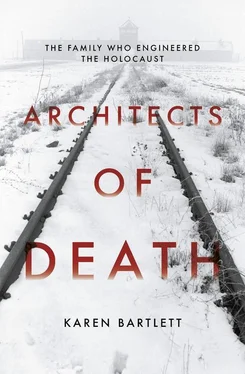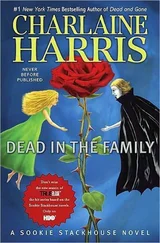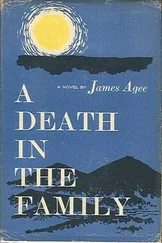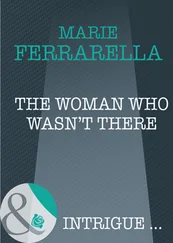CHAPTER EIGHT
INNOVATOR SUN IL THE END
Kurt Prüfer was nothing if not pushy with regards to his work – constantly reminding everyone about his role in the cremation department, his relationship with the SS and his innovation in developing an essential part of the technology for mass murder. Perhaps, given the lack of warmth towards him in the company, and his jostling for small financial rewards, he felt he had to be. Yet, much as he would have liked everyone to believe that he was the sole driver of innovation – the crucial role of Topf and Sons in devising the industrialisation of the Holocaust was very much a group effort. In this way, Topf and Sons was not just the provider of the ovens. It became something much more horrifying.
Take Fritz Sander – a long-standing and highly respected Topf employee. Sander was now a man in his sixties; he had worked for Topf and Sons for decades, had risen to become the manager of the furnace construction division, DI, which produced steam-boiler systems, and was an authorised company representative. This was someone held in such high esteem that Ernst Wolfgang would later describe him as a ‘man of almost exaggerated integrity’.
Such a man, one would think, would not need – or desire – to stoop to dealing with the dirty business of disposing of the bodies of the victims of the Nazis. But it seems that the day-to-day work of overseeing Kurt Prüfer’s oven designs, and signing new orders with the SS, convinced Sander that he had something to prove. Why should Prüfer, a man he disliked intensely, be forging ahead opening up new areas of business for the company and not him? Not only did Sander believe that he too could design an oven – something that was not even his area of technical expertise – but that it would be more brutally efficient than any other oven in operation in a concentration camp. And so Sander dreamt up the ‘corpse incineration oven for mass operation’, and applied for a patent.
On 14 September 1942, Sander wrote to the Topf brothers explaining why his invention was necessary and how it would work: ‘The high demand for cremation ovens for concentration camps – which has recently become especially apparent at Auschwitz… led me to assess whether our present system with muffles is the best solution for the above-named locations.’ [85] Fritz Sander letter to Topf and Sons regarding patent, Landesarchiv Thüringen - Hauptstaatsarchiv Weimar.
In a later interrogation in the Soviet Union, Sander claimed that Prüfer had said that the crematoria at Auschwitz ‘could no longer cope with the number of corpses to be cremated,’ and that two or three bodies were being crammed into a single hatch at one time. Sander then described how, ‘as a specialist in firing technology, I decided on my own initiative to build crematoria with greater corpse-cremation capacity’. This, he explained, ‘would be designed on the conveyor-belt principle, with bodies carried into the ovens continuously by mechanical means’. What Sander had in mind was a conveyor belt, continuously loaded with corpses, with the bodies providing the fuel themselves to burn other bodies. ‘The bodies themselves served as additional combustion fuel.’ [86] Ibid.
This would address the ‘basic problem’ of muffle ovens, as Sander explained it: the cost of the materials, the space required, the amount of fuel needed and the frequency with which the ovens broke down. To rectify this, Sander had sold his idea to the Topf brothers by telling them: ‘I propose an oven with constant feed and operation.’ (In this topsy-turvy moral world, no one questioned that the ‘basic problem’ might in fact be the regime that was killing millions of people)
Referring to the bodies of the victims as ‘cremation objects’, Sander states: ‘It is perfectly clear to me that such an oven is to be regarded purely as an elimination system and that the concepts of reverence, ash separation and any other emotional factors are entirely disregarded. However, all this is already the case with cremation with multi-muffle ovens.’
In one succinct paragraph, with a throwaway final sentence, Sander acknowledges that Topf and Sons have been openly flouting the law with regard to reverence in dealing with human remains in all of their work with the SS. He adds this statement to his patent application, dated 26 October 1942, first writing: ‘This method does not, of course, allow compliance with the Reich Cremation Law of 10 August 1938.’ (The statement was later amended to ‘This method does not, of course, allow compliance with the legal requirements in force across the area of the German Reich.’) In a triumph of Nazi administration-speak, Sander described his invention as a way of ‘restoring hygiene’ in ‘war-related conditions’.
In his patent application, he explains:
With the unavoidably high mortality rate in the assembly camps that have been set up in the occupied Eastern lands in response to the war and its consequences, it is not possible to bury the large number of inmates who die. This is partly due to lack of space and manpower, and partly a result of the clear risk posed to the immediate and wider environment by burial of the dead, many of whom succumbed to infectious diseases. It is therefore necessary to dispose of the bodies, quickly, safely and hygienically by means of cremation. [87] Ibid.
Given the time-sensitive situation, the company had to act fast when applying for the patent, he informed the Topf brothers in his memo, otherwise they risked being overtaken by a rival competitor.
Later Sander would weakly justify his behaviour by claiming he was a ‘German engineer’, much like an engineer working in aircraft construction, who felt obliged to use his knowledge ‘in order to help Hitler’s Germany to victory, even if that resulted in the destruction of human life’. [88] Fritz Sander, Soviet interrogation report, Landesarchiv Thüringen - Hauptstaatsarchiv Weimar.
The fact was, however, that Sander was no Nazi. He was never recorded as expressing any anti-Semitic sentiments. Nor did he need to advance his career; he had risen as high as he could expect to and was close to retirement age. Sander’s motives were driven by pure jealousy and dislike of Kurt Prüfer.
In response, Prüfer understood immediately that Sander was trying to muscle in on an area of work he had claimed as his own. He tells Sander that his design will not work as – in his own vast experience – scorched body parts stick to even steeply sloping surfaces. Sander, however, tells the Topf brothers that this can be easily rectified by adding openings where people outside can give the ‘cremation objects’ a push.
A cremation expert analysed Sander’s design in 1985 and concluded that it was viable and could have cremated 1,200 bodies per day, but, ultimately, the patent was not granted and the ‘Corpse Incineration Oven for Mass Operation’ was never built. In principle, however, it had the full backing of the Topf brothers who initialled Sander’s memo, apparently unperturbed by its contents, and requested a sketch of the new design.
The fact that Sander’s gruesome invention did not come to fruition, did not deter Prüfer. Within six months he had quickly produced an equally heinous innovation: a ‘Ring Cremation Oven’, based on technology already in use for firing bricks.
On 29 January 1943 Prüfer visited Auschwitz-Birkenau and agreed with the chief of construction, Karl Bischoff, that the SS should plan a sixth crematorium, which was originally intended to be an above-ground ‘open crematorium chamber’ and later amended to an underground chamber (presumably to protect it from Allied airstrikes and reconnaissance flights) In a follow-up letter on 5 February Prüfer writes: ‘The quotation for the large ring cremation oven will be with you by next Tuesday at the latest. If you wish to go ahead with this, we would request that you place the order as soon as possible.’
Читать дальше












